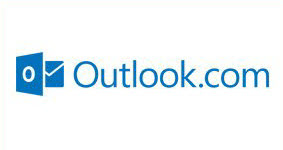Mozilla sent Firefox Version 29.0, referred to as Australis, to the release channel.
Edit:
The update to Australis incorporates major GUI (Graphic User Interface) changes. Some of those changes include the following:
- Removal of the Firefox button, replaced with three diagonal lines located to the far right in the Navigation Toolbar.
- If you used the add-on bar, it is now gone with the content moved to navigation bar.
- The bookmarks icon is no longer available in the Address Bar and has been merged with the bookmarks button.
- The ability to move some elements such as the back and forward buttons has been removed.
- Elimination of small icons and no option to display icons and text in the interface.
You could also switch to the Pale Moon Browser, based on Firefox ESR. The developer is fast to include any needed security fixes but doesn't make changes merely for the sake of change.
Personal comment: These latest changes to Firefox have resulted in a rather ugly interface. I'm glad I switched to Pale Moon as my go-to browser.
Fixed in Firefox 29
- MFSA 2014-47 -- Debugger can bypass XrayWrappers with JavaScript
- MFSA 2014-46 -- Use-after-free in nsHostResolve
- MFSA 2014-45 -- Incorrect IDNA domain name matching for wildcard certificates
- MFSA 2014-44 -- Use-after-free in imgLoader while resizing images
- MFSA 2014-43 -- Cross-site scripting (XSS) using history navigations
- MFSA 2014-42 -- Privilege escalation through Web Notification API
- MFSA 2014-41 -- Out-of-bounds write in Cairo
- MFSA 2014-40 -- Firefox for Android addressbar suppression
- MFSA 2014-39 -- Use-after-free in the Text Track Manager for HTML video
- MFSA 2014-38 -- Buffer overflow when using non-XBL object as XBL
- MFSA 2014-37 -- Out of bounds read while decoding JPG images
- MFSA 2014-36 -- Web Audio memory corruption issues
- MFSA 2014-35 -- Privilege escalation through Mozilla Maintenance Service Installer
- MFSA 2014-34 -- Miscellaneous memory safety hazards (rv:29.0 / rv:24.5)
What’s New
- New -- Significant new customization mode makes it easy to personalize your Web experience to access the features you use the most (learn more)
- New -- A new, easy to access menu sits in the right hand corner of Firefox and includes popular browser controls
- New -- Sleek new tabs provide an overall smoother look and fade into the background when not active
- New -- An interactive onboarding tour to guide users through the new Firefox changes
- New -- The ability to set up Firefox Sync by creating a Firefox account (learn more)
- New -- Gamepad API finalized and enabled (learn more)
- New -- Malay [ma] locale added
- Changed -- Clicking on a W3C Web Notification will switch to the originating tab
Known Issues
- unresolved -- Text Rendering Issues on Windows 7 with Platform Update KB2670838 (MSIE 10 Prerequisite) or on Windows 8.1 has a workaround (see 812695)
- unresolved -- Without affecting security, after restoring your session, Extended Validation Certificates might not display (See 995801)
Update
To get the update now, select "Help" from the Firefox menu at the upper left of the browser window, then pick "About Firefox." Mac users need to select "About Firefox" from the Firefox menu.If you do not use the English language version, Fully Localized Versions are available for download.
References
Remember - "A day without laughter is a day wasted."
May the wind sing to you and the sun rise in your heart...












